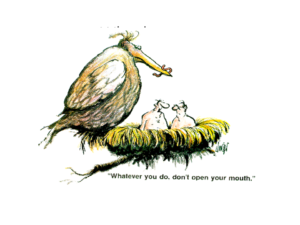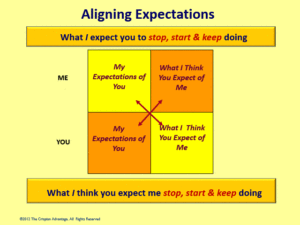
To bring teams together, paddling in the same direction, connect what to do with your why.
-
Technology, expansion, restructuring, global competition… all are compelling reasons Why a business or organization will choose to change.
-
Understanding and agreeing upon the What and How to change is the real challenge.
In our survey of more than 1000 leaders across 80 countries and 19 industry sectors the percent of failed change initiatives ranged from 40-80%! The main reason given for failure? People not being on the same page. What exactly does that mean? Finding out and seeking solutions is the purpose of Focusing Change to Win. It starts with acknowledging and mitigating stress and resistance.
The Change Expectations Framework
From our consulting experience and in-depth studies, we have seen leaders improve their chance of thriving by communicating in ways that engage people and build trust. They focus on Why this Change, What is Expected, and What the Change is Not About. The change expectations framework engages deeper understanding and helps everyone manage stress more effectively.
- The Real Enemy is inactivity, incapability and inflexibility.
- Friction, then growth is the natural order.
- Workplace change is inevitable. Constantly evolving business conditions are realities for everyone.
- Employees can manage job insecurity when they can predict, understand and to some extent, control or at least influence the change.
- With increased employee control the process becomes as important as the outcome.
Stress and Resistance
Assuming we are managing change with limited resources such as people, money, technology and time, leaders must manage the tension between the elements of stop, start and continue. Then, after determining the commercial need for change, leaders need the Emotional Intelligence to identify which groups and individuals are likely to experience unhealthy stress and resistance.
Stress can be negative, positive or neutral. All those implementing change know in advance, to some extent, that a change will be stressful and that not everyone will be willing to engage. For example, people often work well under certain stress to increase productivity. But under other circumstances, they are surprised at the stress that other changes can induce. For example, passing in an examination can be just stressful as failing. The unhealthy stress results when people are under excessive or prolonged stress. The challenge for change leaders is that stress is unique and personal. A situation may be stressful for someone and challenging for others.
Avoiding stress and resistance underscores the need for leadership consensus on” Why are we changing?” In many organizations, leader inconsistency fuels people’s natural resistance. Ever increasing rates of change demand that leaders give clear and compelling reasons for employees to overcome their feelings of “here we go again!” Unfortunately, too many leaders either ignore or are unaware that change will be stressful for their peers and employees.
Overcoming ‘Here we go again!’
Business leaders readily see the need for change to survive, adapt or thrive. The world’s ever-increasing pace demands clear and compelling reasons for employees to overcome their feelings of “here we go again…” What can leaders do about this condition? Start with looking at behaviors.
Successful change programs begin with three linked behaviors that leaders are clear on what they expect people to…
- Stop doing (so they can start doing new things)
- Start doing
- Continue doing
For example:
Stop: Copying me in on correspondence that involves indirect sales.
Start: Ensure that all sales include systems engineering’s approval of all new proposals.
Continue: Ensure quality levels are under 5 ppm on all standard skus.
You might think everyone understands these three actions. According to studies over the past 10 years, you would be wrong at least 70% of the time. It’s even more important today as 89% of leaders say their organizations change at least every 12 months. The leaders’ role in producing sustainable change requires them to consciously understand and be capable of managing and communicating the integration of What, How and Why consistently.
Action Points
Reduce Employee Stress to Manage Change Resistance
Our research shows organizations change anywhere from daily to annually. The triggers for change, how change is managed, and the actual changes are unique to each organization.
Focus on constantly communicating the change expectations framework, including the why of change, what is expected for change to be effective, and what the change is not about.
The Three Common Elements of All Change
Defining your own change and how it is managed starts with:
- Identifying what you expect people to stop doing, so that they can start doing new things
- Specifying what you expect people to start doing
- Confirming what you want people to continue doing, while continuing to coordinate and keep the organization running.
Of course, you also need to have your expectations as to what you are going to stop, start and continue
Other blogs you may be interested in:
